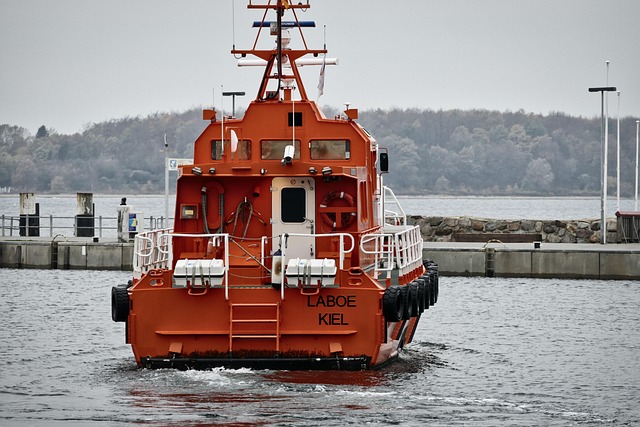Cancer imaging has advanced significantly, but early detection remains challenging due to tissue interference and minimal symptoms. Biopsy-guided imaging technologies like ultrasound, fluoroscopy, and advanced MRI offer real-time visual guidance for minimally invasive procedures, enhancing diagnostic accuracy and reducing risks. These innovative methods enable healthcare professionals to target suspicious lesions with precision, improving cancer diagnosis and treatment planning. Future developments include molecular imaging, fMRI, and AI-enhanced ultrasound, aiming to catch cancers at their earliest stages and revolutionize cancer detection globally, with biopsy-guided imaging as a prominent game-changer.
Cancer imaging technology is evolving rapidly, offering promising prospects for early diagnosis. This article explores the current landscape of cancer detection methods, focusing on the limitations of traditional practices. We delve into the potential of biopsy-guided imaging techniques and emerging technologies that could revolutionize early cancer identification. By examining these innovations, we uncover challenges and future directions, highlighting the ongoing quest to improve patient outcomes through advanced cancer imaging.
Understanding the Current Landscape of Cancer Imaging
The current landscape of cancer imaging is marked by significant advancements in technology, yet challenges remain in early detection and diagnosis. Traditional methods, such as X-rays, CT scans, and MRIs, play a critical role in identifying tumours and assessing their size and location. However, these techniques often fall short in detecting small or early-stage cancers, which may be obscured by surrounding tissues or present minimal symptoms. This is where innovative imaging technologies are making a significant impact.
Biopsy-guided imaging has emerged as a powerful tool, combining real-time visual guidance with minimally invasive procedures. Technologies like ultrasound, fluoroscopy, and advanced magnetic resonance imaging (MRI) offer enhanced accuracy in targeting suspicious lesions. These methods allow for more precise biopsy sampling, improving the diagnostic yield and reducing false negatives. As a result, healthcare professionals can make faster and more confident decisions regarding cancer diagnosis and treatment planning.
The Promise of Biopsy-Guided Imaging Techniques
Biopsy-guided imaging techniques are poised to revolutionize cancer diagnosis by enhancing precision and minimizing invasive procedures. These advanced methods allow healthcare professionals to visualize and target suspicious lesions with unprecedented accuracy, ensuring that a small sample of tissue can be extracted for analysis while guiding the biopsy process through real-time imaging feedback.
By integrating biopsy-guided imaging, early cancer detection becomes more accessible and efficient. This technology promises improved diagnostic rates by enabling the visualization of subtle anomalies that may be difficult to discern through traditional methods. Moreover, it reduces the risks associated with invasive procedures, making cancer screening less daunting for patients while offering a valuable tool for oncologists in their quest for earlier and more effective treatment.
Emerging Technologies for Early Detection
The future of cancer detection lies in innovative imaging technologies that offer non-invasive, early diagnosis possibilities. One such game-changer is biopsy-guided imaging, which leverages advanced visualization techniques to enhance the accuracy and efficiency of tissue sampling. By combining real-time imaging with precise navigation tools, healthcare professionals can identify suspicious lesions more effectively, minimizing false positives and negative results.
These emerging technologies often focus on molecular imaging, where radiotracers specifically target cancer cells, allowing for early detection at a cellular level. Additionally, advances in optical imaging techniques, such as high-resolution endoscopy and confocal microscopy, enable the visualization of subtle changes in tissue structure and composition, potentially catching cancers in their earliest stages.
Challenges and Future Directions in Cancer Imaging Innovation
Cancer imaging technology has made significant strides in recent years, but challenges remain in achieving early and precise diagnoses. One major hurdle is distinguishing between benign and malignant lesions, as many cancerous tumors share similar characteristics with healthy tissues on traditional imaging modalities. This requires innovative approaches to enhance contrast and sensitivity.
Future directions in cancer imaging innovation include the integration of biopsy-guided imaging techniques, where real-time data during a biopsy procedure can provide more accurate information about tissue composition. Advanced imaging technologies like molecular imaging, functional MRI (fMRI), and ultrasound with artificial intelligence (AI) enhancements also hold promise for earlier detection and improved characterization of tumors. These developments could lead to personalized treatment plans and better patient outcomes.
Cancer imaging technology is rapidly evolving, with significant advancements on the horizon. From enhancing biopsy-guided imaging techniques to exploring innovative methods like artificial intelligence and molecular imaging, future innovations promise earlier and more accurate cancer diagnoses. Overcoming current challenges related to cost, accessibility, and standardization will be crucial for maximizing these technological breakthroughs’ potential and ultimately improving patient outcomes in the fight against cancer.
